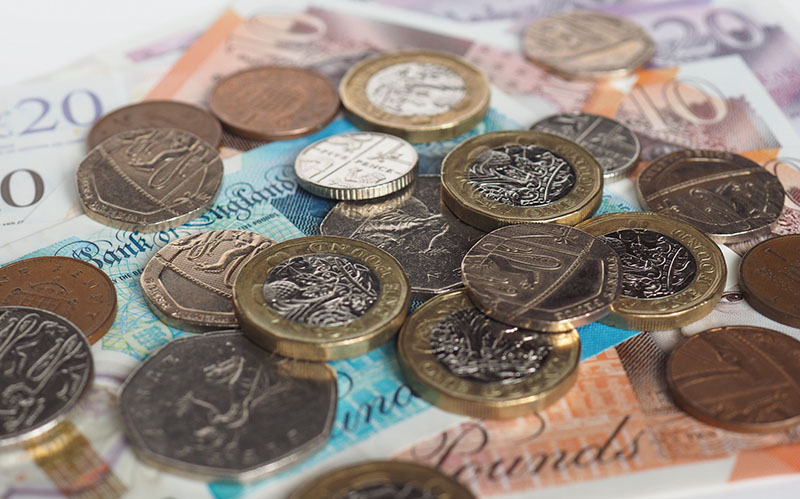
This content is for information and inspiration purposes only. It should not be taken as financial or investment advice. To receive personalised, regulated financial advice please consult us here at Elmfield Financial Planning in Padiham, Burnley, Lancashire.
Few people like to see their savings eroded by inflation, fees or taxes. A cash ISA can help you protect your money from the third by allowing you to earn tax-free interest. In principle, this may sound attractive. Yet cash ISAs may not be as useful as they appear. In this article, our Burnley financial planners explore the state of cash ISAs in 2023 and how they might fit into a financial strategy. We hope this content is useful to you and please contact us if you want to discuss your financial plan with an experienced financial planner in Padiham.
Why cash ISAs are gaining attention in 2023
More savers are considering cash ISAs in 2023 due to higher interest rates offered by savings accounts. The UK’s base interest rate has been rising steadily since late 2021 as the Bank of England struggles to control inflation. In April 2023 it currently stands at 4.25% – the highest rate in 14 years. In turn, other UK lenders like high street banks and building societies have also been raising their rates on financial products like savings accounts and mortgages.
Today, rates for cash ISAs can be as high as 3.35% for easy access and up to 4.3% fixed. Two years ago, rates were closer to 0.40%. Naturally, many people have been excited by the idea of getting more interest from their savings. Yet they may also be wary of their interest breaching their Personal Savings Allowance (PSA), which determines how much interest you can earn in a tax year (outside of an ISA) without tax. Putting savings into an ISA can help mitigate this, as it offers a tax-free “wrapper” for the assets held inside it.
In 2023-24 you can put up to £20,000 into your ISA(s). A basic rate taxpayer is entitled to a PSA of £1,000 per tax year. For someone on the higher rate, the PSA is £500.
Are cash ISAs as good as they seem?
There are at least two reasons why cash ISAs may be over-hyped in 2023. Firstly, the interest rates they offer are still below UK inflation. This means that savings held inside them still stand to lose value, in real terms. UK inflation currently stands at 10.4%. Yet the best fixed-rate cash ISAs are offering rates less than half of this (e.g. 4.3%). In real terms, therefore, savers could still lose over 5% of the value of their savings if these figures are sustained over a 12-month period. Secondly, cash ISAs still generally offer lower rates compared to those offered by regular savings accounts. This is partly because it costs some banks more to set up cash ISAs. There are also more regulations to administer them.
How cash ISAs can work in a financial plan
Cash ISAs can still be useful in a wider financial plan when used prudently. As mentioned, the UK base rate has risen from historic lows in 2021 (0.10%) to 4.25% today. This leaves some people open to a “tax trap” on their savings by inadvertently breaching their Personal Savings Allowance (PSA). For instance, in December 2021 a higher rate taxpayer needed more than £66,000 in a top easy-access savings account (0.75%) before he started to go over his £500 PSA. In late 2022, however, a 2.1% account would potentially have led to this taxpayer going over his PSA with only £24,000 in savings. However, since cash ISA allow for interest to be earned without tax, moving some of the money into this “wrapper” could help to avoid/mitigate tax on his interest.
However, this strategy does come with an “opportunity cost”. In 2023-24, each person can only put £20,000 into ISAs in total. The more ISA allowance you commit towards cash, the less you have for other assets which could achieve higher returns – e.g. shares and bonds. Bear in mind that ISAs not only offer tax-free interest but also tax-free dividends and capital gains. As a general rule, therefore, it is usually better to focus your ISA allowance on non-cash assets which could do better at matching (or beating) inflation.
For those in a marriage or civil partnership, there may be another option if one of you does not work (or, if the person’s earnings are under £17,570). Here, the person concerned can earn up to £5,000 from interest without facing income tax. Spouses and civil partners can also transfer assets between each other without a tax liability. So, if you are nearing your PSA and your ISA allowance is not an option, you could transfer certain assets (e.g. cash savings) to your spouse or civil partner so they can use their £5,000 starting rate for savings. If they are earning, then they still have a PSA of either £1,000 or £500, depending on their income tax rate. They also have their own £20,000 ISA allowance for the tax year. So it may still make sense to transfer to limit your overall household tax bill.
Seek financial advice before making any big decisions about your cash savings or investment portfolio, especially when restructuring assets to try and maximise tax efficiency. This will help you avoid costly errors and craft a more robust long-term plan.
Invitation
If you are interested in starting a conversation about your own financial plan or investments, then we’d love to hear from you. Please contact us to arrange a free, no-commitment consultation with a member of our team here at Elmfield Financial Planning in Padiham, Burnley, Lancashire.
Reach us via:
T: 01282 772938
E: info@elmfieldfp.co.uk

